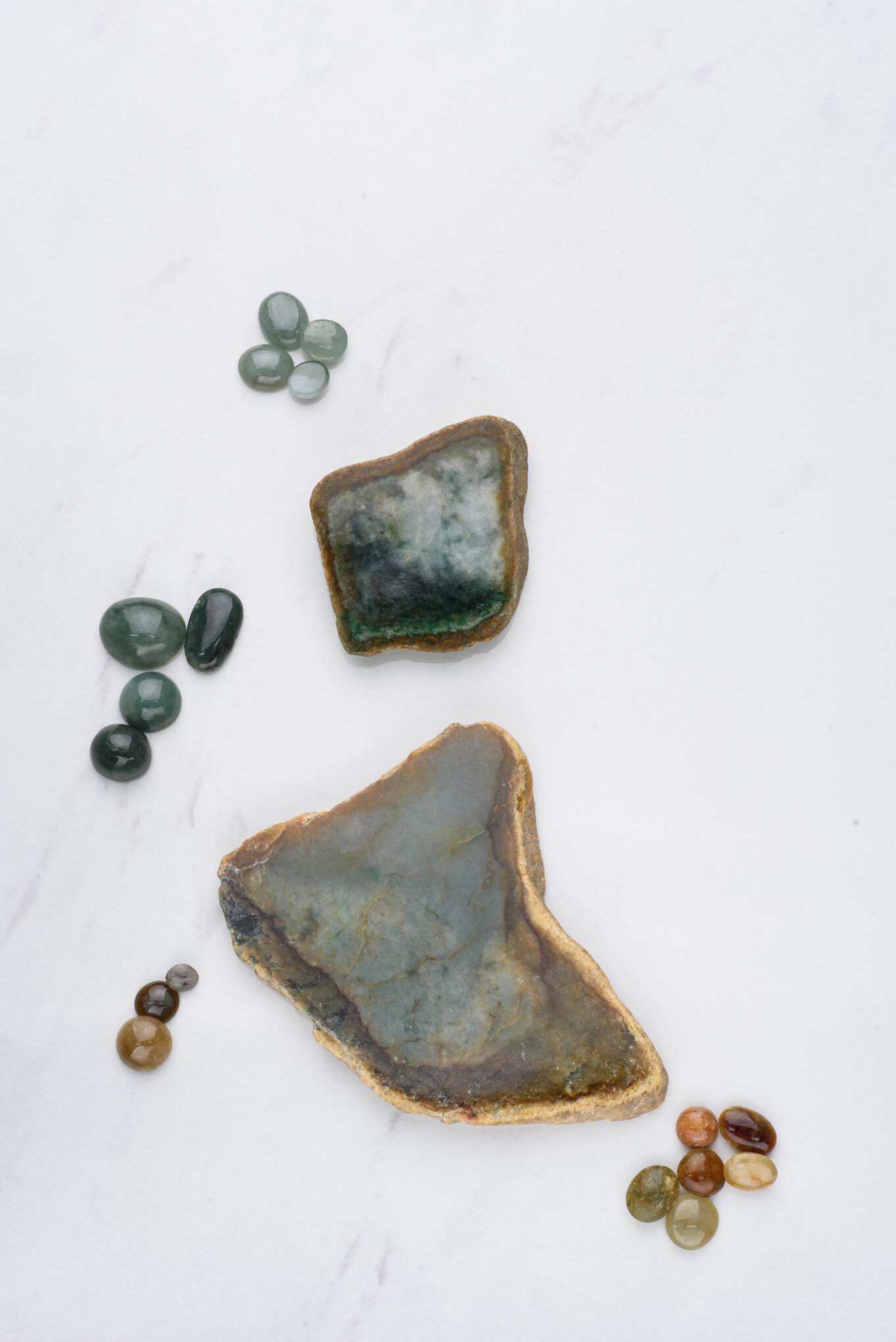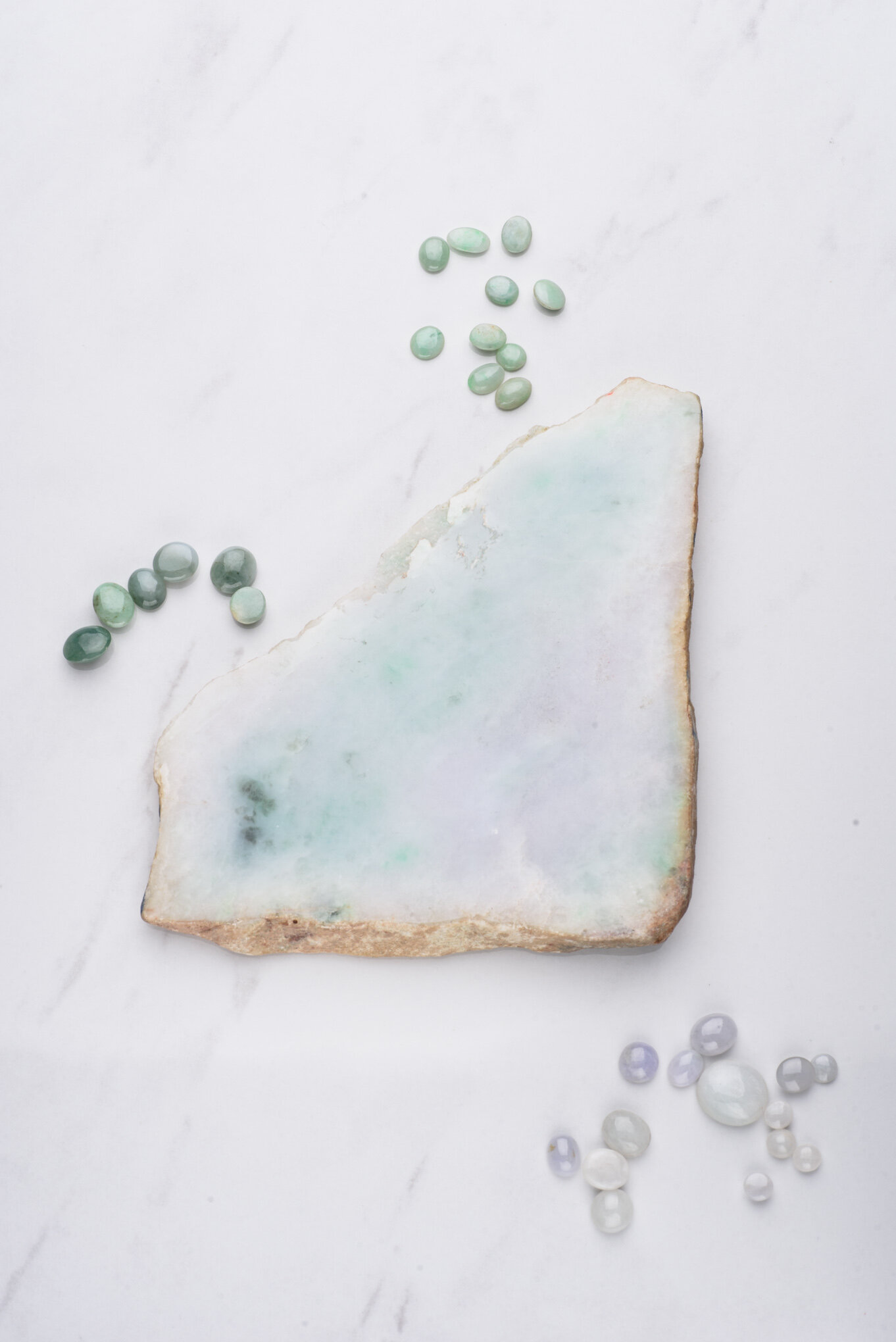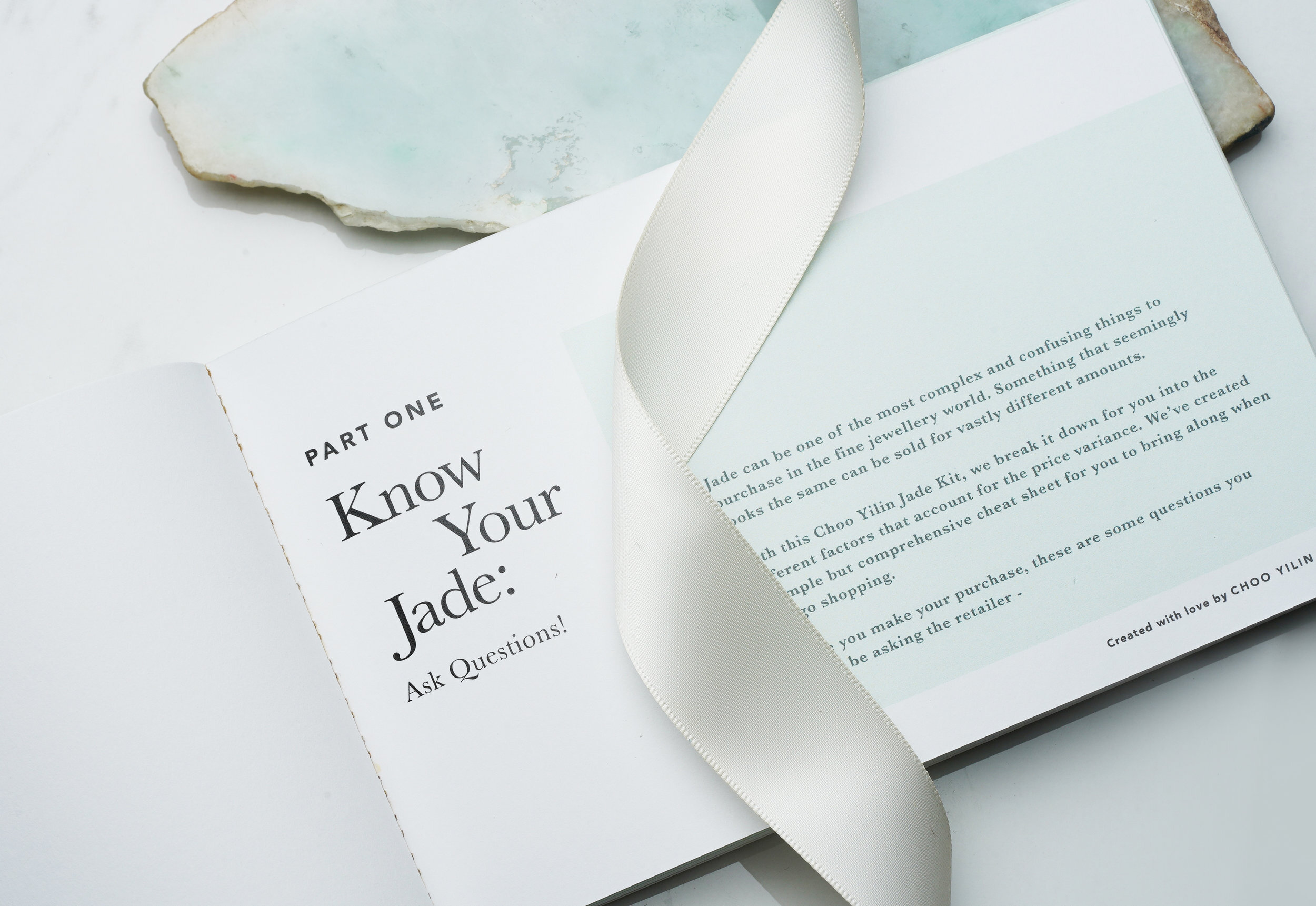Is my jade naturally coloured or dyed? And does it matter?
Is my jade naturally coloured or dyed?
It has been reported that more than 95% of the world’s jade has been treated in some way, with a significant number of it having its colour altered (Type C). The most typical dye treatment is carried out to make the jade a more evenly hued, saturated green. This trend is so common that most people automatically associate jade with this kind of (almost emerald) green, and are surprised when they learn that jade actually occurs naturally in a wide variety of colours.
Within the green spectrum alone, jade exhibits a wide range of hues - from the softest whisper of light green that bring to mind soft pastels and sweet honeydew, to medium greens that draw imagery of freshly cut grass or a bouquet of eucalyptus, and even dark green. We have seen jade that looks black to the naked eye, only to realise it carried the tones of a deep spinach green when light was shone on it. Although it has come to be synonymous with the colour green, jade actually comes in other natural colours including a palette of whites, greys, lavenders, honeys, and reds.
Natural jade very rarely comes in uniform tones of a specific colour. Slicing open a jade boulder often reveals a myriad of colours, likely strewn with clouds and veins. Sometimes they present themselves as brown flecks (naturally created by iron oxide), and other times, as dark green or black flecks (organically pigmented by chromium flecks). We celebrate these “birthmarks”, a subtle nod to nature’s wonder, but historically, not everyone saw the beauty in these brilliantly one-of-a-kind pieces. This led to a trend of jade traders adopting the process of “beautifying” jade by treating it with chemicals and dyes. Jade can be dyed in any number of colours, not only green. This relatively quick and inexpensive process allowed them to promptly respond to the demands in the market whilst increasing their volume of trade. As such, it can be said that the market is often flooded with (dyed) jade of whatever colour is believed to be most desirable at the time - from imperial green to lavender.
Does it even matter?
Our clients often ask us then, does it matter that jade is dyed? What difference does it make? Here are some of the key points to note about dyed jade --
Discoloration: the appearance of a dyed piece of jade will likely alter over time, losing vibrancy and changing colour, transforming into a piece that looks markedly different from the one you purchased.
Vulnerability: the impregnation of chemicals (including bleach and dye) can compromise the structure of jade, increasing the chances of breakage.
Lack of transparency: an asymmetry of information often results in scenarios whereby the artificial treatment of jade is not disclosed to the buyer. Consequently, it’s quite likely that the customer would have paid a (higher) price that reflected one of undyed jade.
Value: the artificial enhancement of natural jade adversely affects its value. Type A Jadeite has been known to best hold (and sometimes even increase in) its market value over time.
HOW TO TELL IF YOUR PIECE IS DYED?
There are various ways to find out if your jade is naturally coloured or dyed.
Only work with Trusted Sellers
The first thing we would recommend is, when you are shopping for jade, to have an in-depth conversation with your seller about the jade. Is it Type A, vs. B or C for example? One of the biggest issues in the jade industry today is a misrepresentation of product. Approximately less than 5% of jade in the world today is Type A, yet the amount of jade that’s being sold in the market as Type A is significantly more than that.
We’ve created a Cheat Sheet to Buying Jade, where we go through a list of five questions you can ask any jade jeweller, including asking them about their audit process. A trusted seller and jade specialist should be able to have these conversations with you, guiding you through the process of procuring your jade piece.
Work with a Third-Party Gemmologist
Additionally, for jade pieces that are of significant value, a suggestion would be to get it appraised by a third party gemmologist. This might make more sense for jade pieces that are purchased above a certain value, because a jade certificate cost as much as a few hundred dollars.




